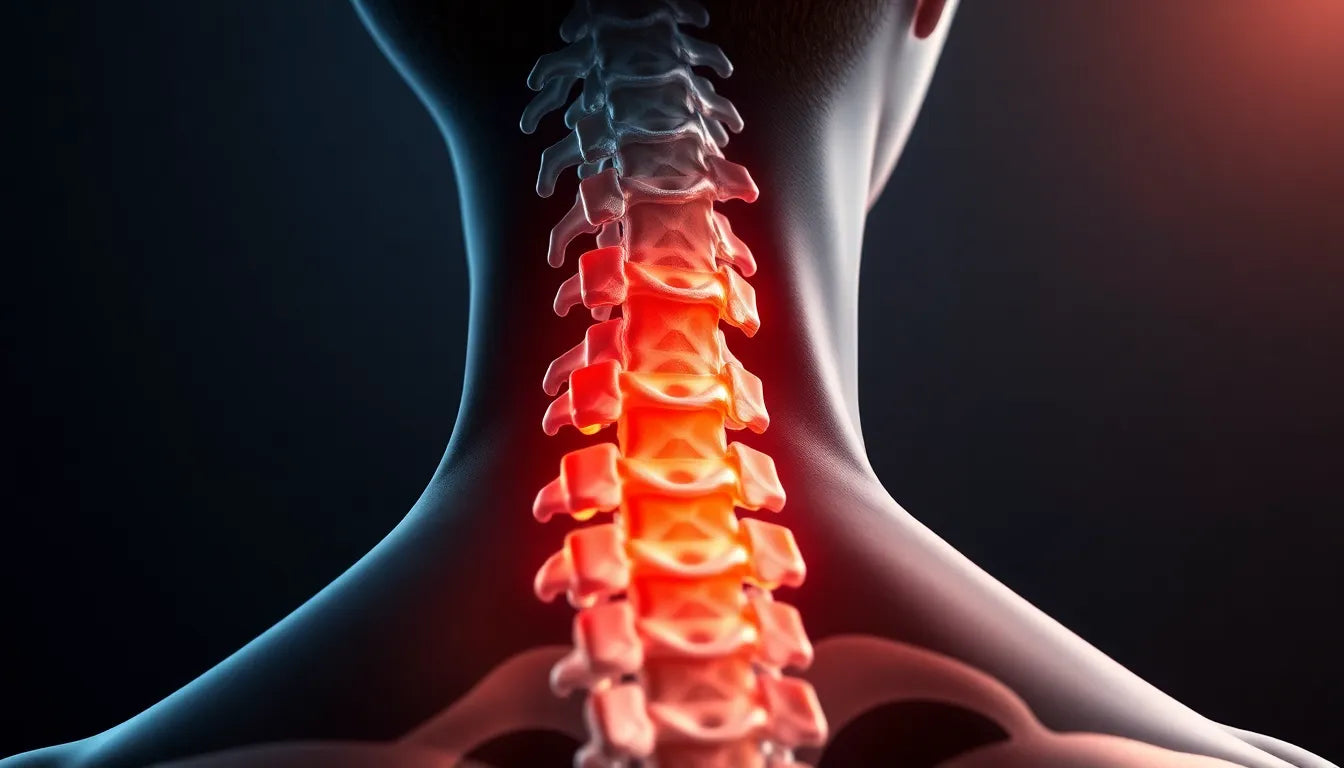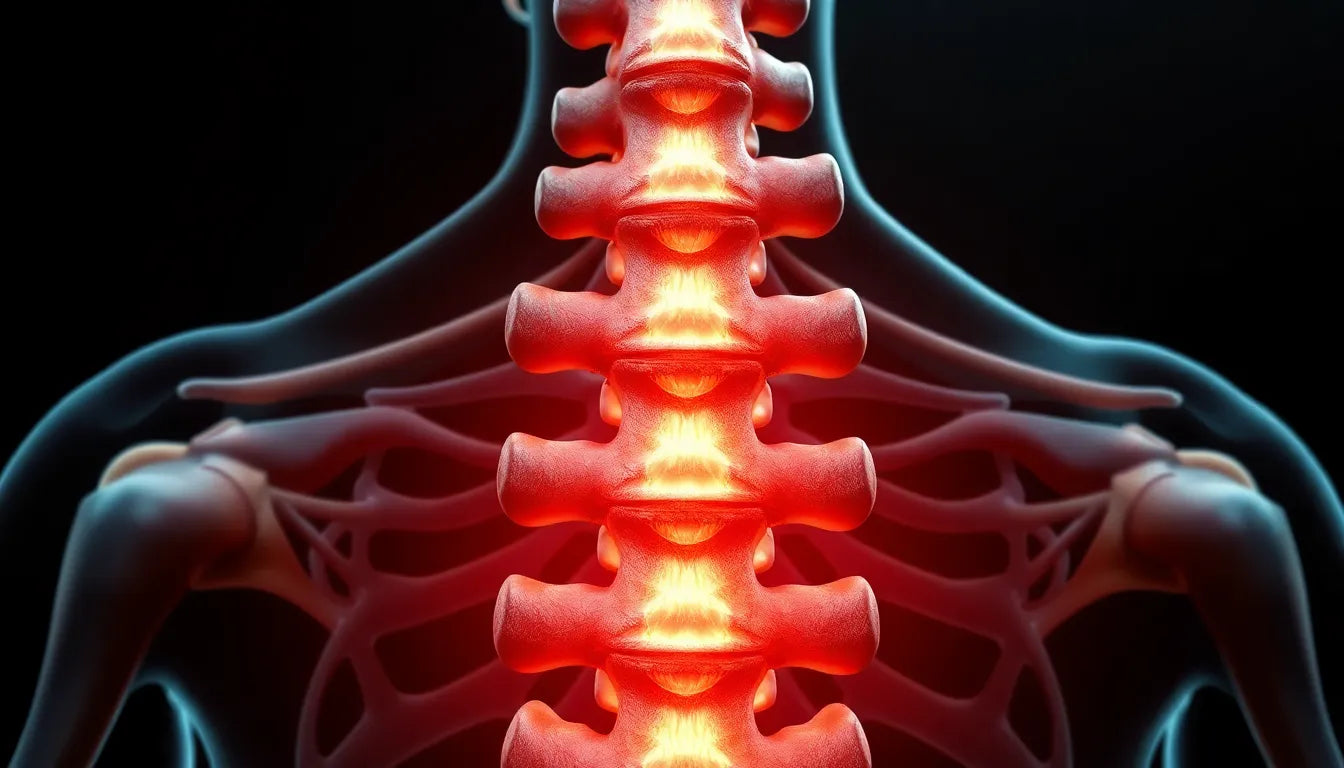Dealing with a herniated disc can be a daunting experience, but understanding the condition is the first step toward recovery. A herniated disc occurs when the soft inner gel of a spinal disc pushes through a crack in the tougher exterior. This can result in pain, numbness, or weakness, often affecting the lower back or neck. These symptoms can significantly impact daily activities, making even the simplest tasks challenging.
Herniated discs are quite common, especially among individuals aged 30 to 50, often resulting from age-related degeneration or injury. The discomfort can range from mild to severe, influencing one’s quality of life. However, the good news is that many people can heal from a herniated disc naturally, without the need for surgical intervention. The body has a remarkable ability to recover, and with the right approach, you can support this natural healing process.
Understanding treatment options for herniated discs
Exploring various treatment options is crucial for anyone dealing with a herniated disc. While surgery might seem like a quick fix, it’s not always necessary. In fact, nonsurgical methods can be highly effective. Understanding these options can offer both psychological comfort and physical relief, empowering you to manage your condition effectively.
Nonsurgical treatments focus on relieving pain and promoting healing through conservative methods. These include rest, physical therapy, and medications, which can alleviate symptoms and enhance recovery. By gaining a comprehensive understanding of these options, you can make informed decisions about your health and avoid unnecessary procedures.
What to expect from this blog post
This blog post aims to guide you through the path of natural healing for a herniated disc. We will delve into evidence-based approaches and practical self-care strategies that can aid in your recovery journey. From rest and activity modification to alternative therapies, we will explore a variety of methods to help you manage your symptoms and promote healing.
By the end of this post, you’ll have a clearer understanding of how to support your body’s natural healing process and take proactive steps toward recovery. Whether you’re just starting to experience symptoms or have been dealing with a herniated disc for some time, this guide will provide valuable insights to help you on your path to healing.
Exploring nonsurgical treatment options
Navigating the journey to heal a herniated disc naturally involves understanding and implementing nonsurgical treatment options. One of the foundational steps is rest and activity modification. Short-term rest, typically one to two days, can be beneficial to alleviate acute pain. However, it's crucial to avoid prolonged inactivity, which can lead to muscle stiffness and decreased mobility. Gradually reintroducing controlled movements and activities helps maintain flexibility and strength, essential for recovery.
Physical therapy plays a pivotal role in the recovery process. It focuses on strengthening the core and back muscles, which provide support to the spine and reduce the strain on the herniated disc. Techniques such as the McKenzie Method are often employed by physical therapists to centralize pain and enhance mobility. This method involves specific exercises designed to alleviate pressure on the spinal nerves and improve overall spinal alignment.
Effective pain management techniques
Managing pain effectively is a critical component of healing from a herniated disc. Cold and heat therapy can be particularly beneficial. Applying cold packs helps reduce inflammation and numb acute pain, while heat therapy promotes blood circulation and aids in the healing process. Alternating between cold and heat can provide comprehensive relief by addressing both inflammation and muscle tension.
In addition to physical therapies, medications such as nonsteroidal anti-inflammatory drugs (NSAIDs) can offer immediate pain relief. These medications work by reducing inflammation and are often recommended as part of a comprehensive pain management plan. However, it's important to use them under the guidance of a healthcare professional to avoid potential side effects.
Alternative therapies for holistic healing
Exploring alternative therapies can also be a valuable part of the healing journey. Chiropractic care, for instance, involves spinal manipulation techniques aimed at relieving pressure on the nerves and aligning the spine. This approach can be moderately effective in managing lower back pain associated with herniated discs.
Acupuncture is another alternative therapy that can complement traditional treatment methods. By stimulating specific points on the body, acupuncture can promote the release of endorphins and improve circulation, potentially reducing pain and enhancing recovery.
Understanding natural recovery and spontaneous healing
One of the most reassuring aspects of dealing with a herniated disc is the potential for natural recovery through spontaneous resorption. Research indicates that the herniated material can shrink or even disappear over time in a significant percentage of cases. This natural healing process underscores the body’s remarkable ability to recover without surgical intervention.
Statistics suggest that most individuals experience significant improvement within a few weeks to a few months with conservative treatment. This high rate of natural recovery highlights the importance of patience and persistence in following a nonsurgical treatment plan.
Summary of nonsurgical treatments
| Treatment | Effectiveness | Outcome |
|---|---|---|
| Rest and activity modification | High | Reduces acute pain and maintains flexibility |
| Physical therapy | High | Strengthens muscles and improves mobility |
| Cold and heat therapy | Moderate | Reduces inflammation and promotes healing |
| NSAIDs | Moderate | Provides immediate pain relief |
| Chiropractic care | Moderate | Relieves nerve pressure and aligns spine |
| Acupuncture | Moderate | Enhances circulation and reduces pain |
Embracing a holistic approach to healing a herniated disc involves combining these nonsurgical treatments to support the body’s natural recovery process. By understanding and implementing these strategies, you can effectively manage your symptoms and promote long-term spinal health.
Long-term management and prevention of herniated discs
To sustain the health of your spine and prevent future herniated discs, embracing long-term management strategies is crucial. Regular physical activity is paramount, as it helps maintain the strength and flexibility of the muscles supporting your spine. Incorporating exercises that focus on core stability and back strengthening can significantly reduce the risk of further injury.
Ergonomic adjustments in your daily environment, such as using supportive chairs and maintaining proper posture, play a vital role in spinal health. Additionally, lifestyle changes like maintaining a healthy weight can alleviate unnecessary pressure on your spine. These proactive measures not only aid in recovery but also serve as preventive strategies against future disc herniations.
When to consider medical intervention
While many herniated discs heal naturally, certain situations may necessitate medical intervention. If you experience severe or persistent symptoms that do not improve with conservative treatment, it may be time to consult a healthcare professional. Signs such as loss of bladder or bowel control, significant weakness, or progressive neurological deficits require immediate medical attention.
Epidural steroid injections can offer short-term relief for those with persistent pain unresponsive to other treatments. These injections reduce inflammation around the affected nerves, providing temporary respite. However, surgery is typically reserved for cases where conservative treatments have failed, or there is severe impairment.
Frequently Asked Questions
How long does it typically take for a herniated disc to heal naturally?
Most herniated discs improve within a few weeks to a few months with conservative care. The body's natural healing processes, along with appropriate nonsurgical treatments, contribute to recovery.
Can exercises really help in healing a herniated disc?
Yes, exercises play a crucial role in healing by strengthening the muscles that support the spine, improving stability, and reducing pain. A well-structured exercise program tailored to your needs can significantly aid in recovery.
Is surgery the only option if pain persists?
Surgery is generally considered a last resort after all nonsurgical treatments have been exhausted. Many individuals find relief through comprehensive conservative management, and surgery is only necessary in rare, severe cases.
How effective is chiropractic care for herniated discs?
Chiropractic care can be moderately effective for relieving lower back pain associated with herniated discs. Spinal manipulation helps realign the spine and relieve pressure on nerves, offering some individuals significant relief.
What lifestyle changes can aid in recovery and prevention?
Maintaining a healthy weight, practicing good posture, and engaging in regular physical activity are key factors in both recovery and prevention. Ergonomic adjustments and core strengthening exercises further support spinal health.
Conclusion
Recovering from a herniated disc naturally is a journey that requires patience, dedication, and the right approach. By embracing a comprehensive strategy that combines self-care, therapy, and professional guidance, you can support your body’s natural healing processes. Remember to consult healthcare professionals to tailor a treatment plan that best suits your individual needs, ensuring a path to recovery and long-term spinal health.
Sources
- Mayo Clinic. "Herniated disk: Diagnosis & Treatment."
- Cleveland Clinic. "Herniated Disk: Overview."
- Sciatica.com. "Herniated Disc: Conservative Therapies."
- Northwestern Medicine. "Herniated Disc: Recovery and Treatment."
- OrthoInfo (AAOS). "Herniated Disc: Conservative Management."
- Orthopedic Reviews. "Herniated Disc: Spontaneous Healing."
- Spine-health.com. "Herniated Disc: Tips for Pain Relief."


















